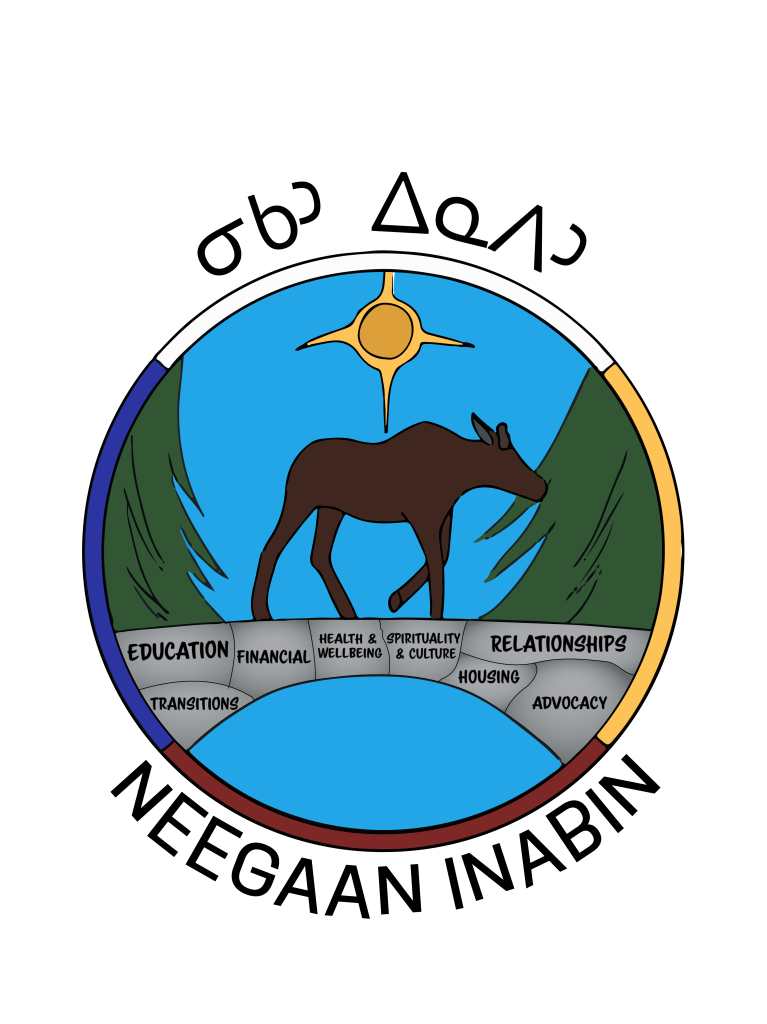Neegaan Inabin provides services up to 26
Neegaan Inabin provides services up to 26
Tikinagan Child and Family Services launches new services to empower young adults
Northwestern Ontario – April 24, 2023: Tikinagan Child and Family Services has launched new services that will empower youth aging out of care and young adults formerly in care to achieve independence and build their future.
The service program is called Neegaan Inabin, which means in Oji-cree “looking forward.” It provides services to young adults from Tikinagan’s 30 First Nations, aged 18-26. Services are voluntary and do not require any legal status or commitment.
Gail Anderson, Tikinagan Director of Services, explains this transitional service is important because the path from youth to adult is not a straight line.
“Starting out on your own as a young adult can be a scary, overwhelming, and lonely experience,” says Anderson. “At the same time, it can also be a time full of potential and growth. We want to give our First Nation young people the tools to succeed as they begin looking forward to their goals and their future.
“Neegaan Inabin is about providing stability and security so our young people can focus on establishing independence. Once they turn 18, they should never have to worry about having a place to live or where their next meal will come from.”
The program will help thriving young adults navigate resources they need to succeed by connecting them with existing supports within their communities. Types of supports include: housing; financial; health and wellness; connection to the land, culture, and spirituality, and learning and education.
Neegaan Inabin will support and complement the Ministry of Ontario’s Ready, Set, Go policy and program, which came into effect April 1, 2023. Planning for Neegaan Inabin and Ready, Set, Go begins as early as 13 for youth in care. Funding for post-majority care support services, such as Neegaan Inabin, became available on April 1, 2022 through Indigenous Services Canada.
Anderson adds: “Neegaan Inabin supports the safety and well-being of First Nations youth and young adults in a way that is culturally appropriate and in their self-identified best interest. It is a holistic service that is an extension of Tiknagan’s Mamow Obiki-ahwahsoowin service model, which recognizes the involvement of the family, extended family, community, First Nation, and other resources.”
Services will be directed by youth and young adults for their peers, as Neegaan Inabin will look to Tikinagan’s Youth Advisory Team to learn from those who have been through or still part of the child welfare system.
“Our young people are always looking forward,” said Anderson. “It’s a part of becoming an adult. You’re always thinking, ‘What’s next? What will my life look life?’ That is why we will learn from them by hearing what it means and what it will take to be an adult in this time.”
Neegaan Inabin and Tikinagan are now accepting applications for the Youth Advisory Team. Applicants can be aged 15-26, and all successful applicants who join the Team will be paid in volunteer hours and/or monetary value for their time and commitment to the project and its related events, activities, and tasks. Those who are interested in applying should complete an online application at tikinagan.org/projects/youth-know-team.
For more information about Neegaan Inabin, visit neegaaninabin.org.
Logo & Branding
Weagamow First Nation youth artist Memekwe Apetawakeesic (Morriseau) drew the Neegaan Inabin logo. The image features a young bull crossing over a bridge.
“My drawing is signaling young adults learning to adult and the transition into adulthood,” explained Memekwe, 16.
The image, which took Memekwe several days to imagine and about a half an hour to complete by first sketching it on paper, then digitalized on her iPad. The logo was then tweaked slightly by changing the blue background, adding the program’s eight pillars on the bridge, and adding the project’s name around the circle.
“I hope people see that my logo represents strength and durability, as moose are very strong and durable animals. And people as well, especially how hard it is to live now after the pandemic now that it’s nearly over.”
The colours around the circle are part of the traditional First Nations medicine wheel. The yellow and maroon are altered to match Tikinagan Child and Family Services’ primary colours. The blue is associated with another one of Tikinagan’s future-orientated projects, Niigaanshkaawin, which means “breaking trail.”


